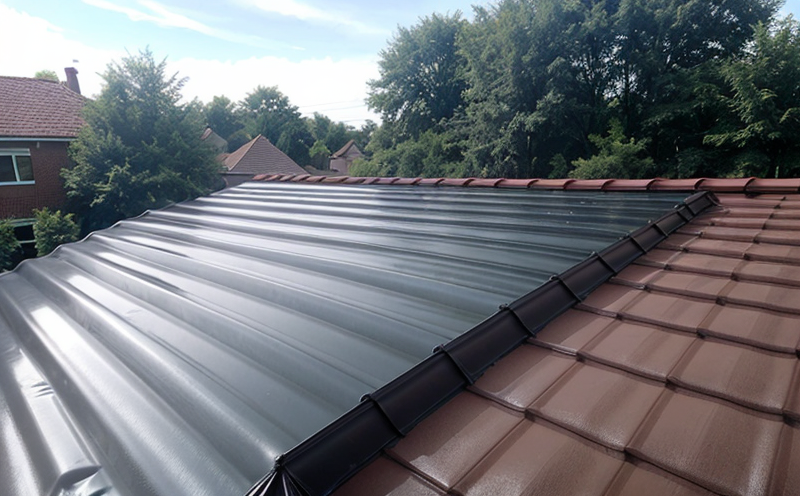ISO 6946 Roof Thermal Resistance Measurement
The ISO 6946 standard provides a method for determining the thermal resistance of roof insulation materials. This is crucial in ensuring that buildings are energy-efficient and that roofs can effectively resist heat transfer, thereby reducing heating and cooling costs.
Thermal resistance (R-value) measures how well a material resists heat flow through it. In roofing systems, this parameter is vital for selecting appropriate insulation materials to achieve desired energy efficiency levels. This service ensures accurate measurement of the thermal performance of roof assemblies, which directly impacts the building's overall energy efficiency.
The testing procedure involves placing the sample under controlled conditions and measuring the temperature difference between two points in the material. The heat flow through this section is then measured using specific equipment such as calorimeters or guarded hot plates. Based on these measurements, the thermal resistance of the roof insulation can be calculated according to ISO 6946 guidelines.
Accurate measurement of thermal resistance helps architects and builders select materials that meet building code requirements for energy efficiency while also enhancing occupant comfort by maintaining stable indoor temperatures.
The results from this service are critical inputs in designing efficient building envelopes. By providing precise data on the thermal properties of roof insulation, it supports informed decision-making processes related to material selection, construction techniques, and overall design considerations aimed at reducing environmental impact through improved energy efficiency.
Scope and Methodology
The scope of the ISO 6946 Roof Thermal Resistance Measurement service includes measuring the thermal resistance of roof insulation materials using a guarded hot plate apparatus. This process adheres strictly to the procedures outlined in the relevant section of ISO 6946.
- Equipment: Guarded hot plate calorimeter
- Samples: Representative sections of roofing insulation
The methodology involves positioning the sample between two plates within a controlled environment. One side is kept at a specified temperature, while the other side is maintained at a lower temperature. Heat flow through the material is measured using sensors integrated into the apparatus.
Data collection begins with preconditioning the sample to ensure consistency across tests. Once stabilized, the actual measurement phase commences where thermal resistance values are calculated based on observed heat flux and temperature differences. Compliance checks against ISO 6946 criteria guarantee accurate results.
Customer Impact and Satisfaction
- Energy Savings: Reduced heating and cooling costs contribute to significant savings for building owners.
- Sustainability: Improved energy efficiency aligns with broader sustainability goals, enhancing environmental responsibility.
- Comfort: Stable indoor temperatures create more comfortable living or working environments.
The service ensures that the thermal performance of roof insulation meets stringent industry standards, thereby supporting sustainable building practices. This not only enhances occupant satisfaction but also contributes positively to long-term operational costs and environmental stewardship.
By leveraging this service, customers gain confidence in their selection of materials that meet specific energy efficiency targets set by local regulations or voluntary commitments made towards green building initiatives.
Environmental and Sustainability Contributions
- Eco-friendly Materials: Promotes the use of sustainable insulation options that minimize environmental footprint.
- Reduction in Carbon Footprint: By enhancing energy efficiency, this service helps reduce greenhouse gas emissions associated with building operations.
- Resource Conservation: Efficiently utilizes resources by optimizing thermal performance and reducing waste generation during construction processes.
The ISO 6946 Roof Thermal Resistance Measurement plays a key role in promoting sustainable practices within the construction industry. It encourages the selection of materials that not only perform well but also contribute positively to environmental conservation efforts.
Through precise measurement and evaluation, this service supports the development of more resilient buildings capable of adapting to changing climatic conditions while maintaining optimal levels of thermal comfort for occupants.





